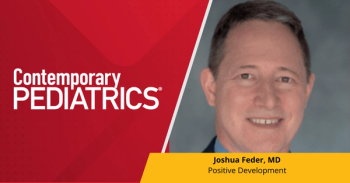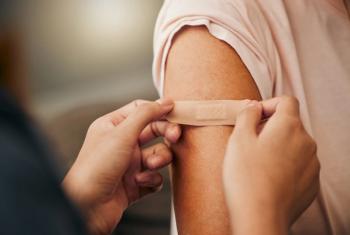
- Vol 36 No 3
- Volume 36
- Issue 3
Feel more comfortable about recommending HPV vaccine
Watching a short training video that addresses provider related barriers to vaccination against human papillomavirus (HPV) corrects common misperceptions about HPV and the vaccine, increases providers’ comfort in counseling vaccine-hesitant parents, and facilitates vaccine completion.
Watching a short training video that addresses provider related barriers to vaccination against human papillomavirus (HPV) corrects common misperceptions about HPV and the vaccine, increases providers’ comfort in counseling vaccine-hesitant parents, and facilitates vaccine completion. These were the findings of a study conducted by a California chapter of the American Academy of Pediatrics (AAP) in 96 pediatric providers, about half of whom were physicians. Participants also included nurses, pediatric residents, and other allied health professionals.
The 20-minute video included didactic teaching outlining the burden of HPV-related disease in males and females, information about vaccine efficacy and administration, misperceptions about vaccine safety and delaying vaccination, and specific strategies for counseling vaccine-hesitant parents, along with 7 clinical vignettes illustrating scenarios related to these topics. Before and after watching the video, participants completed the same questionnaire, which assessed knowledge of HPV-related disease and the vaccine and addressed attitudes and beliefs about HPV vaccination as well as comfort with vaccine counseling.
After viewing the video, participants’ knowledge about HPV increased significantly, particularly with regard to 2 areas: At baseline, most providers underestimated the prevalence of HPV-related disease in males and failed to recognize that HPV vaccine efficacy varied with age during adolescence. In addition, after the intervention there was a significant increase in the proportion of respondents who strongly believed that it was unacceptable to delay HPV vaccination until sexual debut or that vaccination for HPV was as important as immunization against Tdap and meningococcal disease.
Watching the training video also significantly improved providers’ comfort with counseling parents about vaccine safety and their understanding of the importance of vaccinating boys and of the rationale for vaccinating 11- to 12-year-old children before their first sexual experiences. Providers also reported feeling more comfortable about facilitating completion of all vaccine doses and recommending vaccination again to a family who had previously declined it (Kumar MM, et al. Clin Pediatr (Phila). 2019;58[1]:17-23).
Thoughts from Dr Burke
Human papillomavirus causes 1 in 20 cancers in the United States. Before a vaccine was developed, 85% to 90% of adults had been exposed to the virus. Although rates of uptake continue to improve, as of 2017 only 49% of US adolescents were to-date for HPV vaccination and only 66% 13- to 17-year-olds had received a first dose. There is plenty of room for improvement. Spend 20 minutes watching this video to help you do your part in improving rates of vaccination:
Articles in this issue
almost 7 years ago
Riddle me this: Depression, suicide, and the screening imperativealmost 7 years ago
What to do if you get sued for malpracticealmost 7 years ago
How to diagnose and treat severe asthmaalmost 7 years ago
Painful, tense acral bullae in a 12-year-old girlalmost 7 years ago
Supplements for sadness: Safe or senseless?almost 7 years ago
Congenital upper limb deficiency: A case reportalmost 7 years ago
7 ways to involve parents in carealmost 7 years ago
Fish oil supplements not a fix for obese patients with asthmaalmost 7 years ago
Teenager with ankle pain and swellingalmost 7 years ago
Child physical abuse is linked to Friday report card releaseNewsletter
Access practical, evidence-based guidance to support better care for our youngest patients. Join our email list for the latest clinical updates.










